Watch a film by Gabrielle Gorman and you will be struck by her powerful and poetic use of imagery, even as she explores charged subjects such as racism, police brutality, and identity.
Unsurprisingly, a poem is sometimes transformed into a film for the 19-year old filmmaker. One of these was “Blossom,” written the summer before she started high school: “The poem is sort of about these two flowers that grow side by side. They go through a huge storm, and at the end there’s only one flower left.” After writing it, she realized the poem reflected the changes she was going through in her life: “It was really just about how I was blossoming as a young woman. I was growing into myself as a woman, as a black woman.” The poem was so imagistic, she decided to film the images.
“I think poetry is what got me into film. Most people write a script, and for me I write a poem. It’s kind of for me to understand the emotion behind the film. I like to explore the issue in a way that will make people empathize with it and understand it from a more human perspective.”
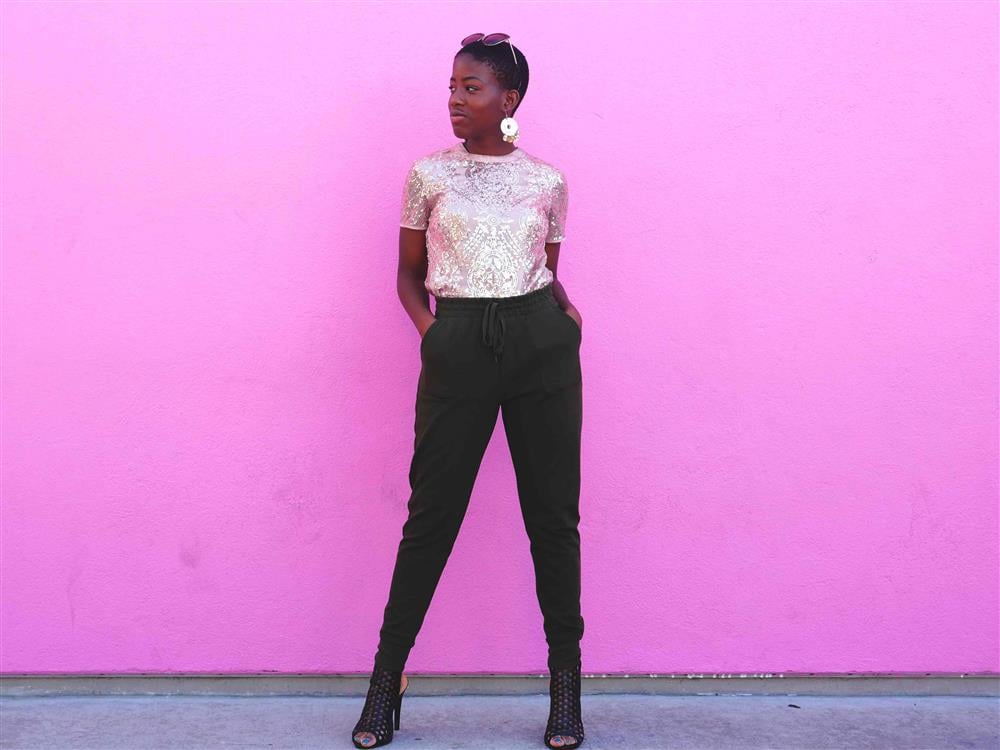
In 2015, we awarded Gabrielle Student Honoree at the MY HERO International Film Festival for her stunning film, Dear America, which received a standing ovation. Dear America, was a reaction to the 2014 shooting of 18-year old Michael Brown by a white police officer in Ferguson: “Like a lot of people I was very frustrated and had a lot of emotions. And so I decided to write a poem about it, which is usually how I express myself when I don’t really know how to talk about my feelings.” Here is an excerpt from the poem:
"We’re still watching black and white TV
Because they chose not to broadcast
The redness of your police brutality.
Of my siblings being shot in the street like deer hunting.
Some inhumane sport for dehumanized things.
And the others being beaten for protesting,
Like venomous bugs infesting your pantry."
In the film, using movement and dance, the actors peel off labels with stereotypes written on them, just as Gabrielle peels away the layers from the public to the private self: “I remember thinking about cutting all of my skin off, in hopes that the skin that would grow would be pale skin,” she says as part of her searing narration. As she narrates the battle of her own self-image with the specters societal categories, we come to recognize a space we all participate in.
Gabrielle describes her artistic struggles to reach this level of honesty: “I got into a huge mental block when it was time to edit it because I wasn’t really sharing my true voice. Something was missing but I didn’t know what it was. I finally sat down, pressed record on my computer and just started talking about how I had gone through a lot of insecurities throughout high school and throughout middle school. How it had been so hard for me to accept my identity as a black woman and how I had felt for so long like I had to be something else, how I had to be lighter, I had to be less black. I wanted to be this picture that society tells you that you should be. And for so long I had sort of kept that hidden. I finally shared that. And I think that’s what made the film what it is now. So many people feel oppressed by some part of their identity, whether it’s their race or their sexuality or a disability or whatever. We all know what it’s like to be judged for the things that make us unique.”
“There are a lot of poems coming out right now that I’ve seen, and films and songs, about police brutality and specifically how it affects men, but I felt like people weren’t really exploring how being a black American has an effect on women or trans women. People from different intersectionalities. I think that’s what I learned through Dear America, because I not only explored what it means to be a black man but what it means to be a black woman, or what it means to be mixed. I also explore colorism. I think I just realized there are other facets to being black in America. You can’t just look at one single story; we all have our own different stories and we all come from a diverse range of social groups. And I hope that that will build more empathy between not only the black community but different communities.”
With this powerful work, Gabrielle went on to win the Aaron Sorkin Writing Award at the Harvard-Westlake Westflix Festival. Gabrielle smiles as she describes how speechless she was when she met Aaron Sorkin: “He liked kneeled down and I was like I don’t even know what to say right now, like life is good!” At a workshop the next day with the other filmmakers, he critiqued all the films except for two, one of which was Dear America. Sorkin said the films were so emotional he couldn’t criticize them: “It meant the world to me, to have someone like him who’s accomplished much in their lives to say that they can’t criticize my film.”
Sorkin also gave her some advice: “He basically cautioned me not to feel like I have to always be the representative of my race, if that makes sense. Or not to feel like I’m letting down the black community if I make a film that’s not about the particular social issues that we face. And I think that is very important, that we have more films that are not just about someone’s identity as a marginalized American or human being, but just putting them in a role that is just a cool teacher or someone who wants to be a soccer player or whatever. I think there needs to be a balance, because it’s all about representation. It’s important to have representations of empowered people who are doing their thing and overcoming obstacles and overcoming barriers.”
Gabrielle was was chosen as one of seven filmmakers in the country to be a 2016 YoungArts Winner in Cinematic Arts and U.S. Presidential Scholar in the arts, one of the highest honors nationwide for high school students. Gabrielle was flown out to Miami to screen her film and create a short film with the other six artists. She also directed a short film of her own through the regional program in Los Angeles–of a script she hadn’t written: “I got to create a short narrative film and it was my first time working with dialogue. I felt like I couldn’t really connect with it at first. The script talks about a woman who has to leave this guy that she likes and he doesn’t really know why.”
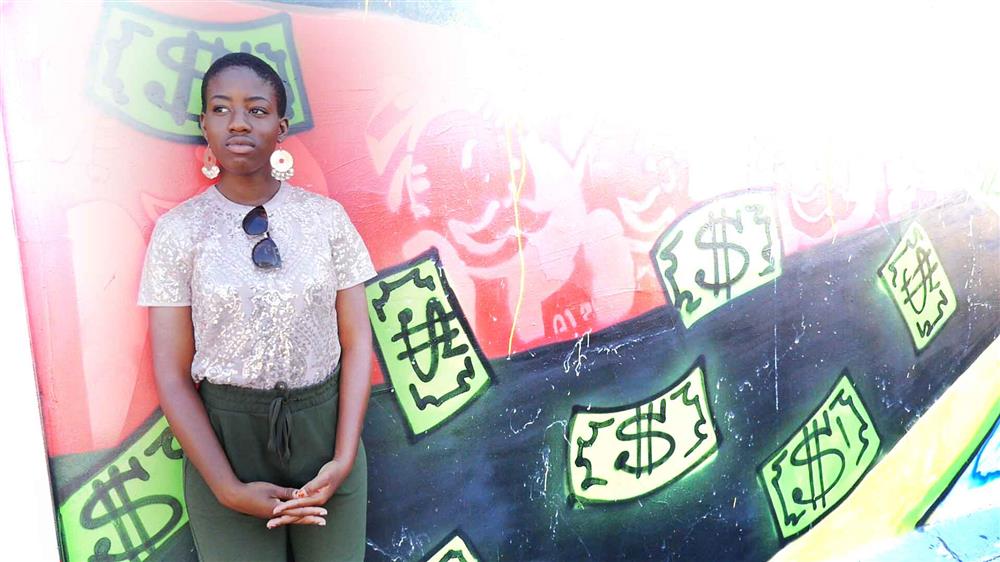
Gabrielle talks about how she came to a creative solution: “When I thought about that I immediately thought of human trafficking and decided to… incorporate that into the backstory. When I told that to the actress I think that really helped her to get more into her character. It was a really emotional experience.”
Gabrielle continues to develop her evocative, confrontational and poetic style in her recent film, Untouched Fruit. She was inspired to make the film when she discovered the little-known history of post-slavery encampments: “I had never learned about this, which was really frustrating. It wasn’t in any of my history books. So I decided to look more into it; I looked into this one camp called –it was in Natchez. And it had the most deaths there. There really wasn’t much about it. And I had to look really hard to find the research that I wanted.”
Research by scholar Jim Downs is part of a recent rewriting of history that challenges the uplifting myth of emancipated slaves. He argues that between 1862 and 1870, at least a million of the four million emancipated slaves succumbed to illness or death. Observers of that time described such camps as “places of ‘extreme destitution and suffering.’ Many camps inhabited by runaway slaves were crowded and filthy, fostering epidemic diseases and resulting in mortality rates of nearly 50 percent.” A contemporary account by Edward McPherson from 1865, The political history of the United States of America, during the great rebellion (1865), cites a general’s order to send former slaves in Natchez, Mississippi to a “contraband encampment” (General Tuttle’s Second Order, March 1864).
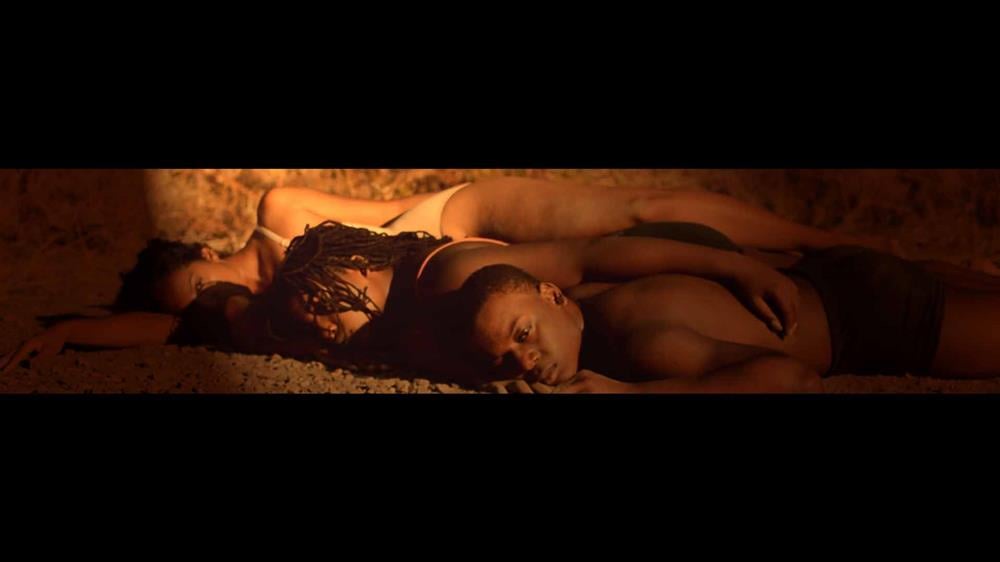
Still from “Untouched Fruit” (2017) by Gabrielle Gorman
Responding to a 7-day film challenge at her school, Gabrielle went to a canyon with a couple of her dancer friends and shot the film. “I captured their different dance movements and wanted to sort of re-enact the events through movement and dance.” Gabrielle is proud of the film’s cinematography and editing. I put a lot of work into the color design of it. I didn’t eat for a whole day and I barely slept in the three days that I had to edit it.”
“People were very touched by it. I got a couple of questions because we are in a fake news era right now. There were a lot of questions regarding how accurate it was. And so that’s why I tried not to put out too many facts or get too specific in the film But I knew this…that after slavery racism didn’t end and slaughter did not end. And many black people died at the hands of ignorance and racism, and this disease. Many black Americans died at the hands of this inability to empathize and to see other human beings as human beings.”
Unafraid of tackling serious subjects in her films, Gabrielle is also unafraid to be funny: “For my film Meet My Mom, I really wanted to explore my comedic side. And so I decided to talk about a situation that actually happened. My mom got really upset because I had thrown away a thing of oil. Back in the day you never wasted oil. I had my mom sit down and talk to the camera and she just improv-ed it. Yeah, she’s like the funniest person that I know so it was really fun to make that with her.”
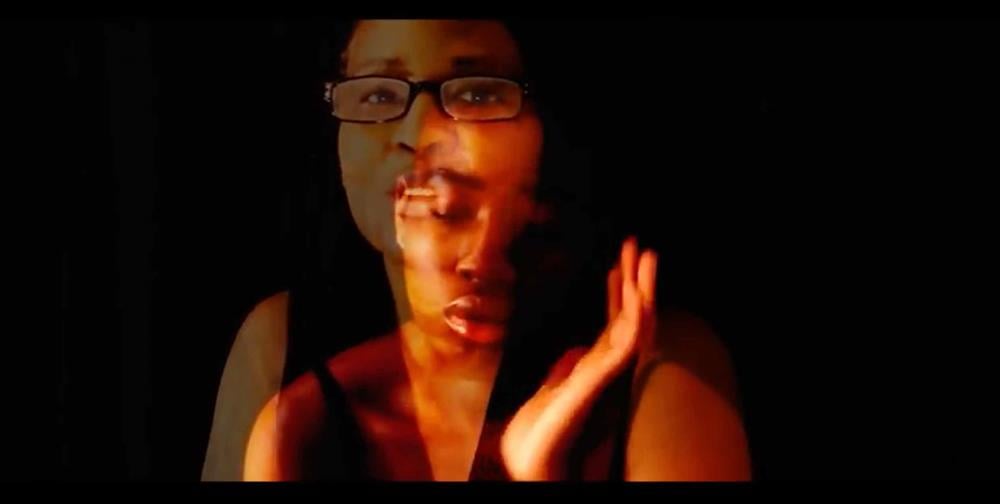
So many people feel oppressed by some part of their identity, whether it’s their race or their sexuality or a disability or whatever. We all know what it’s like to be judged for the things that make us unique.
The film goes beyond a little joke however, when the images of the mother and daughter are super-imposed, showing her natural inclination to truly experiment. “I got the idea to do a double exposure just through messing around with Adobe Premiere. I just love to add an experimental aspect to my films. I never like to do a straight up narrative. I always try to find some cool technique I can do. Like with Bombingham it was two frames, this one it was double exposure. With Dear America I had a distorted TV look to it. I always try to find something that I can add.”
Recently Gabrielle shadowed director Jann Turner on the set of How to Get Away with Murder for two weeks: “That was the best experience of my life! I got to just walk up to different people working on the set and be like, what do you do? They would tell me what they do and how they got into it. It just taught me so much about all the different aspects that go into making one episode. Some days I was there for 12 hours, and I don’t even know how many cups of coffee I drank.” Gabrielle sat with the producer, director and writer, watched the monitor and took lots of notes.
For those who are aspiring filmmakers, Gabrielle shares some of the things she learned: “At least on television there isn’t a whole lot of creative control. It was a lot more working with the actors, rehearsing with them and talking with the AD [assistant director] a lot. Always be certain even if you’re not really sure what the right answer is. Kind of, I guess fake it til you make it! I [also] learned that it’s a lot of walking around so you have to wear comfortable shoes. The director would sit down for a second at a time and then she’d have to get up and talk to the set and then come back.”
Gabrielle brightens at the memory of meeting everyone on the set: “Everyone was just so welcoming and so nice, and they made it such an amazing experience.” On meeting Aja Naomi King: “She kind of just walked up to me and started talking to me and I was just blown away because she’s my favorite character on the show.” And meeting Viola Davis: “That was just amazing. I’ve been just such a huge fan of hers. And she’s just such a beautiful human being inside and out.” Gabrielle says she isn’t often starstruck “but with Viola I couldn’t even speak really. Jan the director said everything for me. I was just there in awe.”
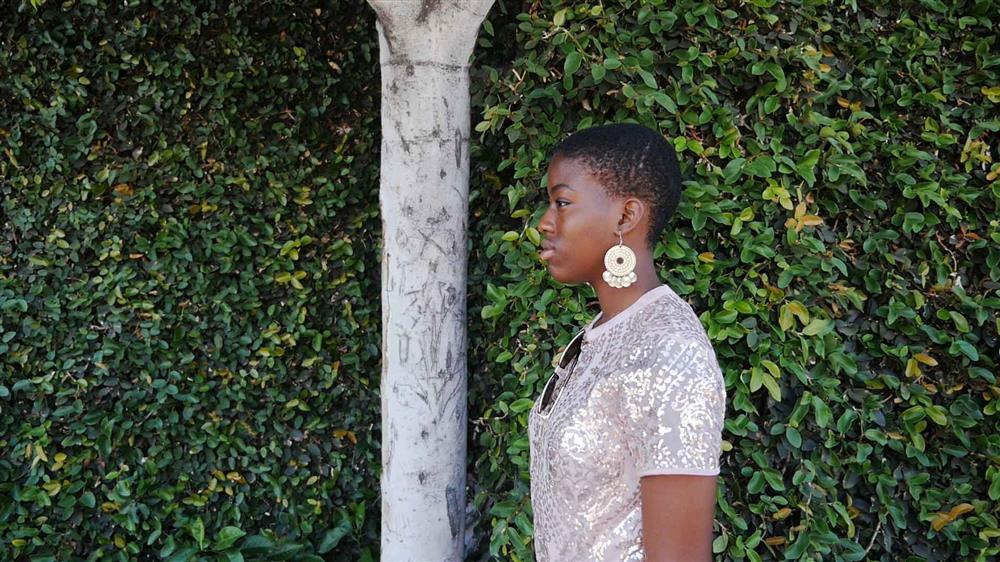
Gabrielle Gorman. Photo: Anabelle Vo.
When I ask Gabrielle what the relation between art and identity is for her, she responds with a quote by Diego Rivera: “What is art if it’s not political?’ That’s very much how I feel. I feel like it’s very hard for me to produce art if it’s not expressing something that people are going through, if it’s not talking about a social issue, if it’s not inspiring change or inspiring self-love. So for me, art and identity are in the same–I’ve always used it to explore what it means to be black in America, to inspire people to be their true and authentic selves and to express who they are and to not feel apologetic about it.”
Her recent involvement with social media platform Obsessee is another way to fulfill those interests: “I followed them for a little bit and they reached out to me. So I’ve been making a couple of videos for them, writing a couple of posts. It’s all about women and non-binary folks. A lot of the posts talk about the issues we face in society and learning to be proud of our gender identity.”
As a filmmaker and activist, Gabrielle wants to tell everyone they are unique and beautiful: “That’s really big for me, to empower young girls because I don’t want people to feel the way that I did as a young girl. And not just girls–everyone understands just what it’s like to be labeled. We all spend so much time trying to hide ourselves and suppress who we really are. We should all accept each other’s beauty and see the beauty in ourselves. And that’s what I hope to accomplish as a filmmaker.” ♦
Gabrielle at the 20th MY HERO Film Festival
MY HERO would like to thank Gabrielle for hosting the 20th MY HERO Film Festival Awards Ceremony. It was held on November 16th, 2024 in Santa Monica at the Ann & Jerry Moss Theater at New Roads School. Gorman, a long-term advocate for international human rights, has been affiliated with MY HERO since 2017 when she was a student at New Road School.
Said Gorman:
It’s thrilling to return. In these uncertain times, I hope tonight fosters unity and reminds us of how much we share. Through these award-winning films, you'll see that efforts for good are never wasted. Change takes time, but as my favorite gospel song says, ‘We Shall Overcome.’ For 20 years, we’ve celebrated heroes and filmmakers dedicated to building a better world. Tonight, you will be inspired by remarkable short films that spotlight wellness, social justice, environmental stewardship, humanitarianism, creativity, and a shared passion for progress. Submissions came from across the globe, honoring heroes from all walks of life. Tonight, we’ll watch clips from the winning films, and you can view the full versions at MyHero.com/winners.
Gabrielle presented the first award of the evening, the MY HERO Media Award 2024, to Goldie Hawn and Tiffany Shlain’s for their short documentary The Teen Brain.
Said Gorman:
We'd like to acknowledge the film's executive producer, Goldie Hawn. Her organization, Mind Up, which has been recognized by the CDC for its effective mental health initiatives in schools, promoting self-regulation and emotional awareness to foster a more compassionate future. We're also thrilled to celebrate Tiffany Lane, director of The Teen Brain, a long time my hero festival participant and past winner, honored by Newsweek as one of the women shaping the 21st century.
You can read Goldie Hawn and Tiffany Shlain's responses, and find out more about the many 2024-winning filmmakers, here: myhero.com/2024-award-ceremony
Page created on 5/31/2017 8:28:40 PM
Last edited 2/6/2025 12:03:34 PM
